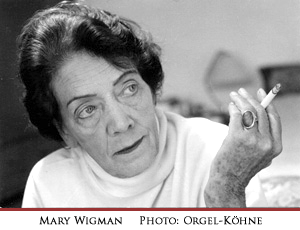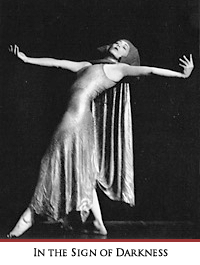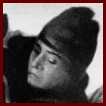 | ||||||||
In 1965 when Judy first encountered Mary Wigman, this internationally respected figure of German culture was seventy-eight. Daughter of a wealthy Hanover industrialist, Wigman was drawn to the arts but did not truly discover dance until 1913, at the age of 27. She became the embodiment of the German Expressionist dance, a form which she evolved through first working with Dalcroze Eurhythmics, later as assistant to Rudolf von Laban as he explored his system of movement dynamics and then through her own experimentation. Cloistering herself with her strong bony body and her lucid, radical intelligence, she gradually evolved an aesthetic and way of dancing which were wholly new. As a soloist and then the director of her own troupe, Wigman appeared on the stages of Europe and abroad. She made three triumphant tours of North America in the 1930s under the auspicies of Impresario Sol Hurok. On February 20, 1931 she danced at Massey Hall in Toronto.
While carving out her concert career, Wigman also committed to maintaining a school. She opened her first school in 1920 in Dresden. To her came the likes of Hanya Holm, Gret Palucca, Margarethe Wallman, Harold Kreutzberg and most of the exponents of the expressionist style. These artists in turn spread this style throughout central Europe and through Holm, to the U.S. During and just after World War II, Wigman taught in Leipzig and then from 1950 to 1967 she operated the school in West Berlin which would become the focal point of modern dance in Europe. (Next Page) ©2005, Dance Collection Danse | ||||
 Mary Wigman is counted among the great radicals of early twentieth-century dance with Isadora Duncan, Ruth St. Denis, Martha Graham and Doris Humphrey. These women were artistic revolutionaries, moving away from the stringent conventions and prettiness of the ballet to found new truths, re-discover organic principles and carve out a way for dance as an art of its time.
Mary Wigman is counted among the great radicals of early twentieth-century dance with Isadora Duncan, Ruth St. Denis, Martha Graham and Doris Humphrey. These women were artistic revolutionaries, moving away from the stringent conventions and prettiness of the ballet to found new truths, re-discover organic principles and carve out a way for dance as an art of its time.



